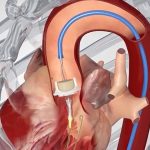
What is acromegaly?
Acromegaly is a rare disorder that affects adults and is caused by overproduction of growth hormone. Growth hormone (also called human growth hormone, GH or HGH) controls the normal growth of the body’s tissues, organs and bones, as well as helping control its metabolism.
A similar condition, known as gigantism, can occur in children and can make them grow very tall. Adults with too much growth hormone don’t grow exceptionally tall because once they have gone through puberty, their long bones don’t grow any longer.
What are the symptoms of acromegaly?
The main signs of acromegaly are:
- changes to facial features, such as a broadening nose, enlarging jaw and more widely spaced teeth
- enlarged lips or tongue
- enlarged hands and feet
A pituitary tumour can also cause a range of other problems, such as:
- carpal tunnel syndrome, which causes numbness or burning in the hands or feet
- high blood sugar levels and diabetes
- high blood pressure and heart disease
- arthritis
- an enlarged thyroid gland
- headaches or vision problems
- thick oily skin, with excessive sweating
- sleep apnoea
- tiredness or fatigue
If you have symptoms of acromegaly, see your doctor for advice.
What causes acromegaly?
Acromegaly is caused by the pituitary gland in the brain producing too much growth hormone, usually because of a benign tumour in the gland. Pituitary tumours (also known as pituitary adenomas) tend to grow very slowly.
Very rarely, acromegaly can be caused by hormone-producing tumours in other parts of the body, such as the lungs, pancreas or adrenal glands.
How is acromegaly diagnosed?
The changes that happen in acromegaly may develop slowly, so it may take some time to notice them and to get medical advice. But getting an early diagnosis is important since it can lower the chances of developing problems such as diabetes or heart disease.
Tests used to diagnose acromegaly include:
- blood tests — to measure the level of hormones
- oral glucose tolerance test — to see how growth hormone levels change when blood sugar level is increased
- an MRI or CT scan — to see the pituitary gland
- x-rays of the skull and jaw — to check bone thickness
How is acromegaly treated?
Treatments can reduce the production of growth hormone to a normal level and help control symptoms. The options for treatment are:
- surgery — to remove a pituitary tumour
- radiotherapy — to shrink a pituitary tumour
- drug therapy — to counter the effects of too much growth hormone
These treatments can be used on their own or in any combination.
Living with acromegaly
Living with acromegaly can be a stressful experience, particularly while waiting for a diagnosis, treatment or for symptoms to improve. However, treatment is often successful. While it might not be possible to reverse all changes to the shape and size of your bones, many people notice their bodies gradually returning to normal over time.
Resources and support
Contact the Australian Pituitary Foundation.



